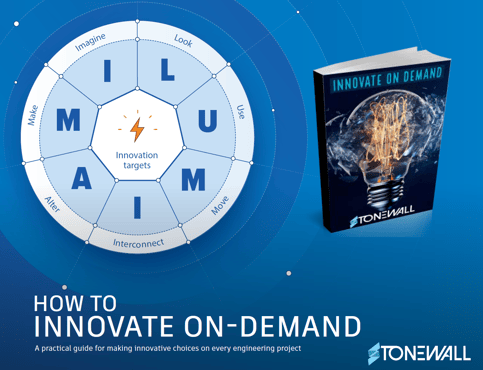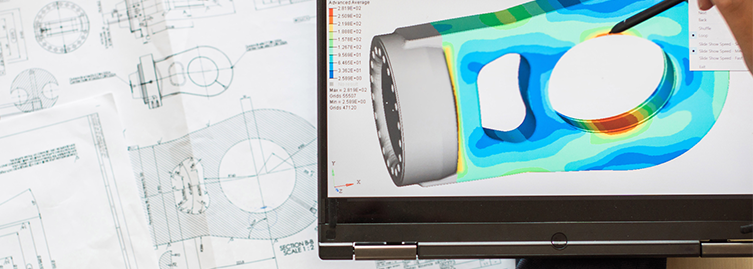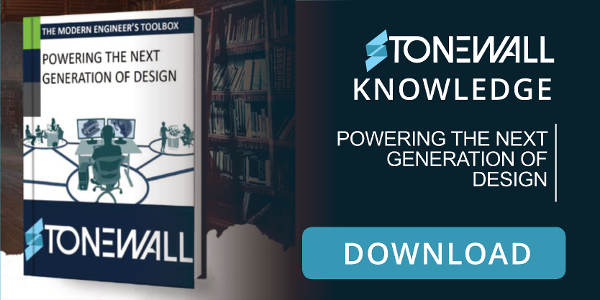5 min read
Winning Bids: Using Technical Expertise and Relationship Skills to Build Success
Blaine LaFleur
Jun 20, 2018
Achieving technical excellence in a company’s chosen field is a commendable goal, but technical excellence means nothing if it doesn’t translate into business success. When a company’s goal is to provide technical services and products, especially engineering and innovation services, to customers it is vital to be able to win the confidence of potential customers in the bidding process.

The creation of a winning bid is a process with many challenges. Some of the basics are a mastery of the field of endeavor and a thorough knowledge of the project’s requirements. Beyond those no-brainer, bottom-line requirements, though, what are the less obvious keys to ensuring the best chance of being the bidder that is walking away with a job?
Quick turnaround of a proposal and the ability to customize the bid in case of changes in customer requirements are vitally important considerations. Proposal materials must demonstrate that your company can meet all of the prospective customer’s requirements. Showcasing your technological mastery and having efficacious communication skills will build confidence that you can meet the customer’s needs and deliver the product that they require.

It helps to have an edge, a technical “leg up” on your competition. Highlight your company’s experience in the field, emphasizing strengths and unique experience with the type of product.
Another consideration in the bidding process is the quality of the presentation. Substance and not glitz wins bids—but even the best technical and financial proposal must be well presented to make a good impression.
The Role of the Technical Content Creator in Winning Bids
Winning a bid requires that you make a favorable impression on the potential client, which is best done by demonstrating technical know-how, showcasing an imaginative approach to the problem, and backing it up with solid financials. Putting that package together is a job for an engineering management team that works together like a well-oiled machine.
In this scenario the design engineers manage and present the technical content without losing sight of the budget and schedule aspects of the job; conversely, the engineering team’s technical managers must lean on their still-active understanding of the technical content while concentrating on their primary task of managing financials budget and schedule. This is a synergistic dance which requires all the players to remain in step in order to attain the goal of convincing a potential customer that the bid being presented is the one that will fulfill all their requirements.
The good news for the technical members of a proposal team these days is that the tools at their disposal, the means by which they will communicate their vision of the task to the potential customer, are often the same as or related to the tools which they used to create the designs.
The same software solutions that technical teams utilize to create their designs, or companion tools from the same suite, give your proposal team the power to inform and educate a potential customer like never before. Simulation, visualization, and collaboration software, and even virtual reality solutions are among the tools that your proposal team may have at its disposal which will communicate to the potential customer just what your company can bring to the project.

The Inner Workings of a Successful Bid
Much of the information that will be presented in the bidding process will be cold, hard facts related to technical, financial, and scheduled aspects of the job—but there’s more to a winning bid than just the facts.
The hard data associated with a contract bid may be well backed up by experience and previous, related work, but it is still, essentially, promises—and promises are elusive, ethereal things that ask for faith from those who are being asked to believe them—the customer. For a customer to take that leap of faith and place their business with your company, your proposal team must develop that belief, creating empathy in the mind of the customer.
As part of the bid process, it is important that your proposal team get to know the potential customer, to understand their goals and their approach to doing business. The better your proposal team understands the customer, the better they will understand the customer’s needs and wants in relation to the job being bid, and the more likely it is that they will find an approach that creates a bond with the customer. The ultimate goal in the process is to develop a lasting and impact relationship.
The same kind of atmosphere that creates a feeling of teamwork within your company’s project teams can be harnessed to achieve a similar kind of bond between your organization and your customer. All organizations operate on trust—between co-workers, between labor and management, between mutually supporting departments, etc. If you strive to create that same feeling of teamwork, of cooperation and the mutual pursuit of a common goal with your customer, this will go a long way toward getting them “in your corner” and convincing them that you are the right company with which to place their business.
The Whole Package
It takes a combination of tangibles and intangible factors to boost win rates on bids. A presentation that demonstrates a technical mastery of the task and a firm grasp of the schedule and budgetary challenges comprises the tangible; the intangibles are the creation of a bond with the potential customer, and a feeling of teamwork which is based on building a personal relationship with your customer.
The Role of the Technical Content Creator in Winning Bids
Winning a bid requires that you make a favorable impression on the potential client, which is best done by demonstrating technical know-how, showcasing an imaginative approach to the problem, and backing it up with solid financials. Putting that package together is a job for an engineering/technical management team that works together like a well-oiled machine.
In this scenario the design engineers manage and present the technical content without losing sight of the budget and schedule aspects of the job; conversely, the engineering team’s technical managers must lean on their still-active understanding of the technical content while concentrating on their primary task of managing financials budget and schedule. This is a synergistic dance which requires all the players to remain in step in order to attain the goal of convincing a potential customer that the bid being presented is the one that will fulfill all their requirements.
The good news for the technical members of a proposal team these days is that the tools at their disposal, the means by which they will communicate their vision of the task to the potential customer, are often the same as or related to the tools which they used to create the designs.
The same software solutions that technical teams utilize to create their designs, or companion tools from the same suite, give your proposal team the power to inform and educate a potential customer like never before. Simulation, visualization, and collaboration software, and even virtual reality solutions are among the tools that your proposal team may have at its disposal which will communicate to the potential customer just what your company can bring to the project.

The Inner Workings of a Successful Bid
Much of the information that will be presented in the bidding process will be cold, hard facts related to technical, financial, and schedular aspects of the job—but there’s more to a winning bid than just the facts.
The hard data associated with a contract bid may be well backed up by experience and previous, related work, but it is still, essentially, promises—and promises are elusive, ethereal things that ask for faith from those who are being asked to believe them—the customer. For a customer to take that leap of faith and place their business with your company, your proposal team must develop that belief, creating empathy in the mind of the customer.
As part of the bid process, it is important that your proposal team get to know the potential customer, to understand their goals and their approach to doing business. The better your proposal team know the customer, the better they will understand the customer’s needs and wants in relation to the job being bid, and the more likely it is that they will find an approach that creates a bond with the customer.
The same kind of atmosphere that creates a feeling of teamwork within your company’s project teams can be harnessed to achieve a similar kind of bond between your organization and your customer. All organizations operate on trust—between co-workers, between labor and management, between mutually supporting departments, etc. If you strive to create that same feeling of teamwork, of cooperation and the mutual pursuit of a common goal with your customer, this will go a long way toward getting them “in your corner” and convincing them that you are the right company with which to place their business.
The Whole Package
It takes a combination of tangibles and intangible factors to boost win rates on bids. A presentation that demonstrates a technical mastery of the task and a firm grasp of the schedule and budgetary challenges comprises the tangible; the intangibles are the creation of a bond with the potential customer, and a feeling of teamwork which is based on a study of their goals for the project being bid.






